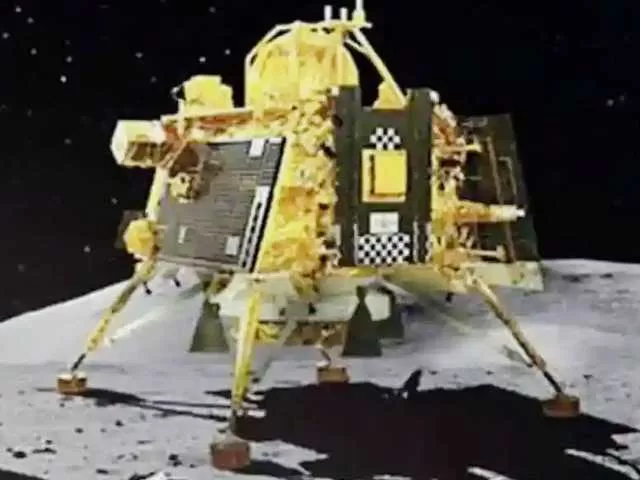NASA’s Lunar Reconnaissance Orbiter successfully pings India’s Chandrayaan-3 lander with a laser, marking a milestone in lunar surface precision targeting and revealing the Moon’s gradual drift away from Earth.
Lunar Precision: NASA’s Laser Beams Reach India’s Chandrayaan-3 Lander
In a groundbreaking feat of technological precision, NASA’s Lunar Reconnaissance Orbiter (LRO) has successfully pinged India’s Chandrayaan-3 lander using a laser instrument. The laser beam, transmitted and reflected between the LRO and an Oreo-sized device on the Vikram lander, has opened new possibilities for precisely locating targets on the Moon’s surface, heralding a new era in lunar exploration.
The Laser Link: A Technological Marvel
Situated 100 kilometers away from the LRO, near the Manzinus crater in the Moon’s south pole region, the Vikram lander became the focal point of NASA’s laser experiment. On December 12 last year, laser pulses were transmitted from the LRO towards the lander. The critical moment arrived when the orbiter detected light bouncing back from a tiny NASA retroreflector aboard Vikram, confirming the success of the technique.
The process involves sending laser pulses towards an object and measuring the time it takes for the light to bounce back. While this method is commonly used on Earth to track the locations of satellites, the reverse application—sending laser pulses from a moving spacecraft to a stationary one—opens up new avenues for precise location determination on the lunar surface.
Scientific Implications: A Lunar Milestone
The success of this laser experiment holds significant scientific implications. Xiaoli Sun, leading the team at NASA’s Goddard Space Flight Center, highlighted the achievement, stating, “We’ve showed that we can locate our retroreflector on the surface from the Moon’s orbit.” The retroreflector, part of a collaboration between NASA and the Indian Space Research Organization (ISRO), marks a milestone in lunar exploration technology.
The Laser Retroreflector Array (LRA), a tiny yet powerful device measuring only 2 inches or 5 centimeters wide, comprises eight quartz-corner-cube prisms set into a dome-shaped aluminum frame. Its simplicity and durability, requiring neither power nor maintenance, make it an ideal tool for lunar exploration. The retroreflector can reflect light from any direction back to its source, providing valuable data for scientific and exploratory missions.
Lunar Insights: The Moon’s Gradual Drift
The retroreflector, reflecting light back to Earth, has been instrumental in revealing that the Moon is gradually moving away from our planet at a rate of 3.8 centimeters per year. This lunar drift, monitored through the suitcase-size retroreflectors, adds another layer of understanding to Earth’s natural satellite.
ISRO, reacting to the development, highlighted the Laser Retroreflector Array (LRA) on the Chandrayaan-3 lander serving as a fiducial point, precisely located markers for reference, on the Moon. This collaboration underscores the significance of international partnerships in advancing lunar exploration and technological frontiers.
Future Prospects: Refining Lunar Location Techniques
With this success, the focus shifts to refining the technique for routine use in future lunar missions. The collaboration between NASA and ISRO sets the stage for enhanced precision in lunar surface targeting, paving the way for a new era of exploration and discovery.
In the vast expanse of space, where precision is paramount, the successful laser ping between the LRO and Chandrayaan-3 lander marks not just a technological milestone but a testament to the collaborative spirit propelling humanity’s quest for knowledge beyond our celestial boundaries.

